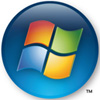 Services in Windows are quite a controversial topic for various reasons. In this article I will try to clarify them as much as possible. Therefore, I will describe what services are, how they work and where to find the list of services installed in Windows
Services in Windows are quite a controversial topic for various reasons. In this article I will try to clarify them as much as possible. Therefore, I will describe what services are, how they work and where to find the list of services installed in Windows 
What are services?
Services are applications which start when Windows loads and which run quietly in the background without requiring any user interaction. They perform different kinds of jobs without which Windows could not function. These services handle lots of essential functions such as network connections or hardware identification and management. As an example, one of the most well known service is Print Spooler which handles the way printing is done.
How services work?
Services can only be in one of these states:
- Started - this represents the normal running state for a service. It means it is active and provides the appropriate functions to Windows.
- Stopped - this means that the service is shut down and non-operational. The service is unloaded from the computer memory.
- Pause - it is suspended but remains in the computer memory and responds to control requests. However, it no longer provides its service to Windows. Control requests are commands such as prepare for shut down, resume operation, etc.
- Automatic - Windows automatically starts the service during the boot process. The service will provide its functions as soon as Windows is started up.
- Automatic Delayed - this start-up method was introduced in Windows
Vista and it is almost identical to the one above. The only difference is the fact that a service with a delayed auto-start is started shortly after the system has booted, but not immediately - as automatic services do. This option helps to improve boot performance. However, it can be applied only to those services which do not offer critical functions on which other services depend.
- Manual - the service is not loaded automatically by Windows and it needs to be started manually, as shown below in this article.
- Disabled - the service cannot be started. To make it start and provide its functions, the user must change the start-up type to automatic or manual and then start it, as shown below.
Where to find the services in Windows Vista
The list of services installed on your Windows Vista can be accessed in several ways. You can go to 'Control Panel -> System and Maintenance -> Administrative Tools -> Services' as shown in the screenshot below.

If you are using the Classic View you can go directly to 'Control Panel -> Administrative Tools -> Services'. Alternatively you can search for the word 'services' both in the Start Menu and the Control Panel search box.
Once launched, the Services window will look similar to the screenshot below. Please keep in mind that you won't be able to launch the Services window unless you are an administrator.

You will see a list with all the services installed in Windows Vista and, for each service, information such as Name, Description, Status, Startup Type and Logon User. You can sort this on the available criteria by double-clicking on the name of the column you are interested in.
Once you have found the service you were searching for, double-click on it and you will see a window with all its properties, similar to the one below. Alternatively, you can right-click on it and select Properties.

How to start, stop, pause or resume a service
To modify the status of any service, first you need to find it and open its properties using the instructions above. Once you have done that, you can see its status.

You will also see a list of buttons with possible actions for changing its status. If it is started, you can stop it or pause it. However, in most cases the Pause button is grayed out as only a few services can be paused. There will be also cases when all buttons are grayed out. This means that, either the service is completely disabled or it is already started, but the user cannot change its status as that would affect Windows' stability.
Once you clicked on a button, you will see a window like the one below showing the status of the implementation of the change you requested.

When done, it will disappear and the status will be changed. When finished, click OK and close the Services window.
NOTE: changing the status of a service applies only until the next Windows boot. A status change is not a permanent one. Also, the status can be changed manually at any time during the current session.
How to change the startup type of a service
Changing the startup type can also be done from the Properties window of the service. Go to the Startup type field. There you will see the current startup type. To change it, click on it and select the type you desire from the drop-down list shown below.

When done, click OK.
NOTE: changing the startup type of a service doesn't apply immediately. You can disable a service but it will still run until you reboot Windows. To also stop it for the current session, you need to perform the change manually, as shown in the section above. However, the modification is permanent. Once you reboot your system, Windows will always use the setting you made.
Where to find information about all Windows Vista services
If you want to know what each service does, there are two good locations where you can find this information:
Which services can be safely disabled in order to improve performance
Unfortunately there is no answer that can apply to everybody. Depending on the needs you have, one person can disable a service without noticing any difference while another will have serious problems. Choosing which services to disable requires some investigation and experimentation. If you are a beginner without technical knowledge on Windows Vista, then it is best to leave the services configured as they already are.
If you are willing to do a bit of digging and experimenting, then you should check out these guides:
After working for several years with Windows, I personally agree with Ed Bott when he says that there are only three built-in Windows Vista services that matter, performance-wise. Disabling those (only if you don't need them) can result in noticeable performance gains. Disabling other services is more likely to result in a rather worse user experience than an improved performance.
If you have knowledge on this topic, don't hesitate to leave a comment and tell us about your experience with Windows Vista services: which you recommend disabling and why?

 So, you’ve turned off the Aero interface, changed your power settings, adjusted indexing, reduced the number of startup programs, and cleaned the
So, you’ve turned off the Aero interface, changed your power settings, adjusted indexing, reduced the number of startup programs, and cleaned the  Some of our readers wanted to know how to update the album information for the tracks in their music library and how to add album covers, so that they show up in
Some of our readers wanted to know how to update the album information for the tracks in their music library and how to add album covers, so that they show up in 









 If you have visited our site in the last few days, I'm sure you noticed the new Firefox 3 Download Day 2008 logo. On the 17th of June 2008, Mozilla has officially launched the 3rd version of their famous
If you have visited our site in the last few days, I'm sure you noticed the new Firefox 3 Download Day 2008 logo. On the 17th of June 2008, Mozilla has officially launched the 3rd version of their famous 











 Some of our visitors searched the site for
Some of our visitors searched the site for 






